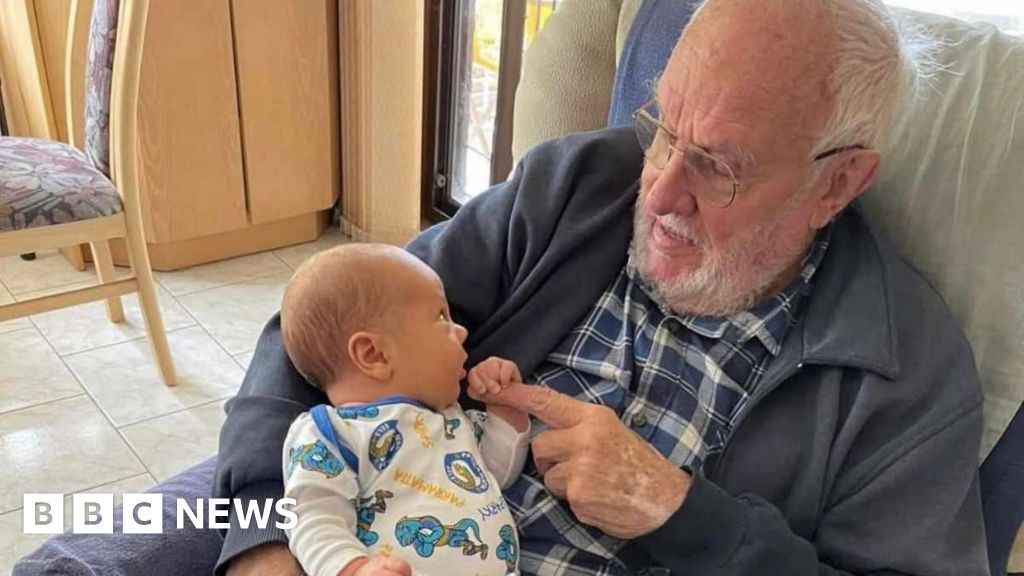BEHIND THE NEWS:

Youth football fans compete in football skills drills during the NFL Community Clinics Day in Kansas City, Mo. Health experts recommend children not play tackle football before age 14 to reduce CTE risk. Photo by: Peter Aiken / AP, file
Friday, Aug. 1, 2025 | 2 a.m.
Editor’s note: “Behind the News” is the product of Sun staff assisted by the Sun’s AI lab, which includes a variety of tools such as Anthropic’s Claude, Perplexity AI, Google Gemini and ChatGPT.
Each autumn, over a million young Americans suit up in helmets and shoulder pads for football.
Growing concerns about repetitive head trauma in youth sports have gained renewed urgency following a tragic incident in New York this week.
A former high school football player who committed a deadly shooting before taking his own life left behind a note claiming he suffered from chronic traumatic encephalopathy (CTE), a degenerative brain condition linked to repeated head impacts.
Las Vegas resident Shane Tamura, who played prep football in California, killed four people before ending his own life. In his three-page note, according to authorities, he attributed his condition to playing football.
“Football gave me CTE,” Tamura allegedly wrote, requesting that his brain be studied after his death.
The incident has intensified ongoing debates about the safety of youth football and the long-term neurological risks faced by young athletes who experience repeated head impacts during their playing careers.
Risks of tackle football for young athletes
Young athletes (ages 6–14) in tackle football experience vastly more head impacts — up to 15 times more — and 23 times more high-magnitude impacts compared to flag football participants [3]. Even subconcussive hits that do not cause symptoms can lead to cumulative brain injury and are not prevented by helmets alone [4].
CTE is linked not just to concussions but to repetitive head impacts over time. Key findings include:
- Each additional year of tackle football before age 14 increases CTE risk by approximately 30%
- The risk doubles every 2.6 years of play [1][2]
- CTE and related symptoms (memory loss, aggression, poor impulse control) have been diagnosed in 30-40% of select former high school players studied
- Nearly 92% of former NFL players examined after death showed signs of CTE [2][4]
Expert recommendations on starting age
Experts, including the Concussion Legacy Foundation and CDC, strongly recommend flag football or other nontackle alternatives until at least age 14 [1][3]. Starting tackle football before age 14 is associated with much higher risk for later-life brain decline, CTE and neuropsychiatric symptoms [1][2]. Notably, many NFL legends did not play tackle football until high school, playing flag football or other sports instead [1].
Safety equipment and helmet selection
While no helmet can fully prevent concussions or CTE, proper equipment selection is important:
- Choose helmets that meet NOCSAE (National Operating Committee on Standards for Athletic Equipment) certification
- Ensure proper fit — snug without causing discomfort
- Maintain good condition with no cracks, intact padding and secure chinstrap
- Some helmets incorporate impact sensors, but these are not substitutes for supervision or medical evaluation [5]
Common signs and symptoms of head injury
Parents, coaches and athletes should watch for the following indicators of possible head injury:
Physical symptoms:
- Headache or feeling of pressure in the head
- Fatigue or feeling sluggish
- Nausea or repeated vomiting
- Dizziness, balance problems, or unsteadiness
- Sensitivity to light or noise
- Blurred or double vision
Cognitive and behavioral symptoms:
- Confusion, disorientation or difficulty focusing
- Memory problems or inability to remember events before or after injury
- Slowness in answering questions
- Mood or behavior changes such as irritability, anxiety or unusual emotional responses
- Physical clumsiness or appearing dazed or stunned
Emergency warning signs
Seek immediate emergency care if the following occur:
- Convulsions or seizures
- Loss of consciousness with inability to wake up or remaining drowsy
- Severe headache that worsens
- One pupil larger than the other
- Weakness, numbness or decreased coordination
- Repeated vomiting
- Fluid or blood draining from nose or ears [6][7][8]
Benefits of youth football
Despite the risks, tackle football can provide several developmental benefits:
Physical development:
- Promotes cardiovascular health, muscle strength and coordination
- Encourages regular exercise contributing to healthy development and bone strength [13][14]
Social and emotional development:
- Develops teamwork abilities and communication skills
- Builds discipline, responsibility and time management skills
- Fosters mental toughness and resilience through overcoming challenges
- Provides leadership development opportunities
- Creates community connections and sense of belonging [13][14][15]
Sources
[1] https://concussionfoundation.org/programs/flag-football/
[2] https://www.bu.edu/articles/2025/nyc-gunman-wants-brain-studied-for-cte/
[3] https://www.cdc.gov/traumatic-brain-injury/data-research/comparing-head-impacts/index.html
[4] https://pmc.ncbi.nlm.nih.gov/articles/PMC8404728/
[5] https://orthoinfo.aaos.org/en/staying-healthy/ortho-pinion-football-injuries-in-young-athletes/
[6] https://www.cdc.gov/heads-up/signs-symptoms/index.html
[7]https://www.mayoclinic.org/diseases-conditions/concussion/symptoms-causes/syc-20355594
[8] https://www.hopkinsmedicine.org/health/conditions-and-diseases/head-injury-in-children
[9] https://www.chop.edu/news/should-parents-let-their-child-play-football-weighing-pros-and-cons
[13] https://playfootball.nfl.com/parents/benefits-of-youth-tackle-football/
[14] https://www.tacklesmartsports.com/youth-football-guide-basics-benefits/
[15] https://playfootball.nfl.com/about-youth-football/the-values-of-football/
.png)








 English (US) ·
English (US) ·